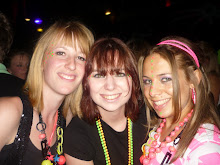I found this paragraph very interesting when I was reading a research document on Teaching visual imagery for vocabulary learning, the article can be found here
Scott, et al (2003) stated that creating visual images is useful when learning new words associated with known concepts or when learning definitions. According to van den Broek and Kremer (2000), students use mental imagery in reading to depict key text elements such as events, facts, and setting and to illustrate meaningful relationships between elements. Visual imagery assists students in learning word meaning and in making better predictions and inferences (Center, et al, 1999). Pictures can cue students with learning disabilities with decoding unknown words, can decrease task complexity, and can assist in developing memory for the written word (van der Bijl, Alant, & Lloyd, 2006). Visual imagery, as it is conceptualized by the author's of this study, is supported by Paivio's (1971) dual coding theory which suggests that verbal and non-verbal information are represented and processed in distinct but interconnected mental subsystems. Additionally, using visual imagery requires students to personalize word meanings (principle one), to build on multiple sources of information (principle three), and to connect what is personally known to new vocabulary concepts (principle four) (Blachowicz & Fisher, 2000).
Briefly reading through the paper showed that students use images to remember things, including words. The main aim of the paper was to research into teaching strategies. Teachers are comfortable with their teaching methods that when they go on education programs, the teaching strategies used are rarely used because they are unsure as to how it works.
The paper continued to discuss a test which was conducted based around visual imagery against word representation. The outcome showed that the visual imagery ahd the most popular results.
My initial thought for imagery was to improve childrens design skills on the computer although after reading this paper it has shown a whole new outlook on how the imagery could be used. This will be both useful for this artefact and artefacts to come.
skip to main |
skip to sidebar
Search
Archives
-
▼
2010
(124)
-
▼
March
(30)
- PRP - Artefact 5 evaluation
- Client Project - Validating/cross browser check
- PRP - The school visit!!
- PRP - Fifth artefact, design update
- Client project - Search Engine Optimisation
- PRP - Fifth artefact, Boowa and Kwala website
- PRP - Fifth artefact, imagery used in matching pai...
- Client project - Global flash gallery
- PRP - Fifther artefact. start of design designing
- SPP3 - The not so successful images
- PRP - Fifth artefact, the use of imagery
- Client project - Next Gen gallery
- Client project - Contact form
- PRP - Fifth artefact ideas
- Supersized background image
- SPP3 - Catalogue Ideas 3
- PRP - Fourth artefact evaluation
- SPP3 - Catalogue Ideas, sticking to the right size
- SPP3 - Catalogue Ideas 2
- SPP3 - Catalogue Ideas
- PRP - Fourth artefact, BBC interview
- PRP - Fourth Artefact, can games be motivational?
- SPP - Image ideas
- catalogue
- PRP - Fourth artefact design
- Client Project - Website drop down menu
- Client Project - Suitable drop down menus
- Client Project - Wordpress upload
- PRP - Fourth artefact, positive feedback
- PRP - Fourth artefact ideas
-
▼
March
(30)
Categories
- Client Project (36)
- Prp Project (58)
- Simulated Project (17)
- SPP3 (29)
About Me
Copyright 2009
Sarah's Blog. Powered by Blogger. Blogger Showcase
Blogger Templates created by Deluxe Templates. Wordpress by Wpthemesfree

No comments:
Post a Comment